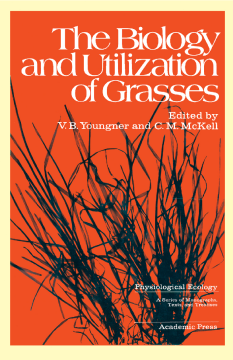
Additional Information
Book Details
Abstract
The Biology and Utilization of Grasses reviews current knowledge about grass biology, and it highlights the important role of grasses in human existence. It discusses many fundamental aspects of grass biology, including evolution and genetics, morphology, physiology, and ecology, with emphasis on the relationship of these basic concepts to the use of grasses for forage, turf, and rangelands.
Comprised of 28 chapters, this volume begins with an overview of the evolution and genetics of the grass family, followed by a discussion on practical grass-breeding problems. The reader is also introduced to vegetative growth and development of seedlings and mature plants; the ecological aspects of grasses; soils and mineral nutrition in relation to grass growth; the effects of defoliation (moving or grazing); carbohydrate reserves; physiology of flowering; and grass seed production and culture treatments. Other chapters consider the role of polyploidy in the evolution and distribution of grasses; selection and breeding of grasses for forage and other uses; seedling vigor and seedling establishment; environmental modification for seedling establishment; the microclimate of grass communities; effects on turf grass of cultural practices in relation to microclimate; and competition within the grass community.
This book will be of benefit to plant breeders, ecologists, botanists, and biologists.
